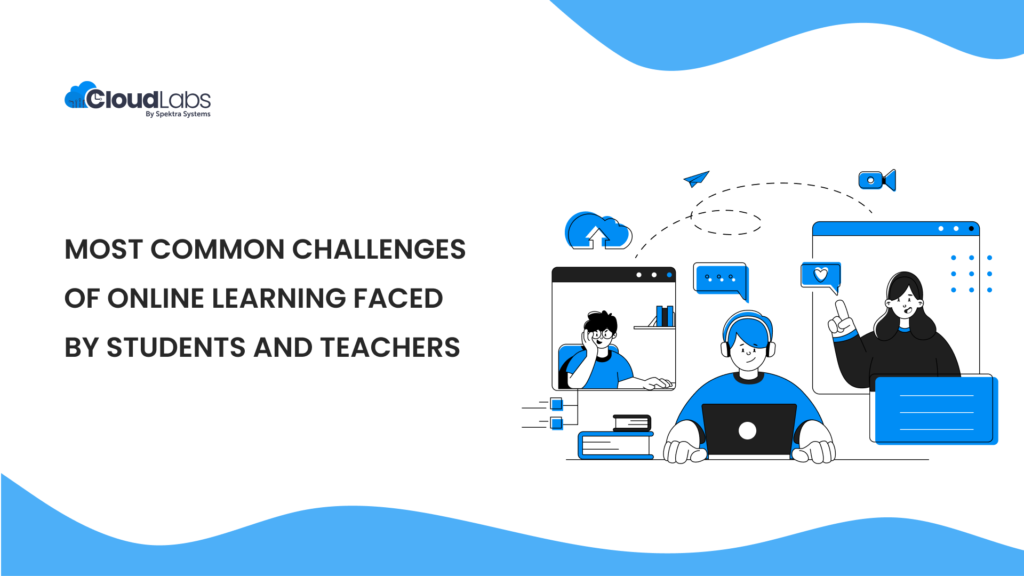It was the start of the Pandemic and the shutdown of schools that educational Institutions worldwide shifted to a completely online system of learning.
But now, can we imagine ourselves getting back to the conventional classes, well yes but not completely!
As the world is rapidly moving to virtual reality, the current education system needs to be upgraded with modern teaching equipment and an approach that provides hands-on practical training to develop the necessary skill set.
The present-day virtual classrooms, though appear to be the most viable means of teaching remotely, also come along with a set of challenges and drawbacks that need to be tackled.
In this blog, we are going to address the most common challenges of online learning for students and the effective solutions.
Most Common Challenges of Online Learning and effective steps for students

Photo by Thomas Park on Unsplash
1. The shift from the physical classroom to virtual setup
A sudden shift to a virtual instructor-led training method did rattle a wide group of students, though the younger generation is typically more tech-savvy, the change in environment from physical classrooms to virtual desktops did need a period of adjustment for all of us. However, there are students and instructors who are still not fully adapted to online learning scenarios.
Whether it’s about the classroom environment, ease of taking notes, ease of focus which is typically associated with a classroom setup, or the luxury of interacting with your peers, the absence of these factors together are significant challenges of online learning.
Here’s how you can mitigate the online learning problems and make your transition to virtual modality smoother:
- Personalized learning platforms with hands-on training for practical sessions
Taking learning to a completely virtual platform is a big feat for both students and teachers. To make the process easier, it is necessary that educational institutions opt for the correct virtual platforms which are easy to access, personalized as per the courses and the requirements of the institution, and provide a hands-on training experience for many complex courses that require high-level level technical skills.
2. Technical drawbacks- A common setback in challenges of online learning
When it comes to technology and innovation, the perks are endless!
However, they also come with the downside of technical glitches. And many of us often get tangled in technical errors like devices not responding, difficulty in navigation through apps, low network, and so on. Let’s list some common technical drawbacks associated with virtual training systems.
- Poor internet connections
- Lack of required devices
- Lack of proficiency in operating the required software and application.
In order to move ahead of these regularly occurring scenarios, we can take some active measures like
- An informative onboarding process that trains students on the required software before starting the course.
- Inform them of the necessary requirements ranging from devices to device updates in advance to ensure a smooth learning process.
- Consider virtual training platforms that come with handy tools and easy applications to make it easy for the students and the instructors to make the best use of resources and study materials. Instructors, in this case, must solely concentrate on teaching without the hassle of running the program or troubleshooting errors.
3. Distractions are a perpetual challenge in online learning
As students need to take virtual sessions from the comforts of their homes, they are now vulnerable to distractions more than ever before.
Whether it is the day-to-day household chores running around them, their pets, their devices, or their means of entertainment, the challenges are endless, and ways to mitigate them are thin.
Even as we encourage students to take their virtual training sessions in an isolated corner of their homes, we must enforce some additional steps to lift their moods and help them focus on virtual learning.
- Host interactive sessions and encourage participation through chats.
This will help in holding your student’s attention and make remote learning interactive. Student engagement through chats will make them feel included and help in problem-solving.
- Adopt concept-based teaching with videos and graphics (pictorial superiority effect), practical training, and self-assessment.
We are aware of the power of visuals, and how it aids in understanding the concepts. This fact is also backed up by a phenomenon called the pictorial superiority effect which means that humans have a higher tendency of retaining images and visuals than words. Also, it piques students’ attention and can make learning fun and interactive.
4. Lack of Communication can be a serious challenge in online learning
Online learning, as done remotely, hosts a variety of challenges, but the most prominent can be Lack of Communication.
It is natural for students to shy away from participation, either due to a lack of confidence or the topic may not be clearly understood.
While active participation yields easy problem-solving, a better grip on the concept and a boost of confidence in students, lack of it can make students passive learners.
Though they may get through the course and assessment, chances are they may fail to apply these concepts in practical training.
Educational Institutions must acknowledge the challenges of online learning and adopt a strategical approach to face them.
- Encourage collaborative projects
The best way for students to cultivate communication skills and establish a thorough understanding of the subject is through collaborative projects. Students can use virtual platforms like Microsoft Teams, Zoom, or Google Meets to discuss projects, collaborate by screen sharing, and develop a problem-solving attitude by discussing ideas and contemplating possible outcomes.
- Provide breaks exclusively for the students to chat and interact with each other
To make online learning a two-way process, it must be taken care of that students are provided with breaks exclusively to interact with their peers.
Online learning can make students feel isolated. To help them gauge lack of motivation, students must be given a chance to foster their friendships in the classroom and develop a healthy environment for learning.
A healthy learning environment is one where students can talk to their peers and blow off some steam.
Most Common Challenges of online learning and effective steps for teachers

Photo by Chris Montgomery on Unsplash
The pros of EdTech are always going to outnumber the cons, but that doesn’t mean they won’t prick us in the shoes. We need to take active measures to eliminate the challenges of online learning.
To achieve this goal, we need a system where our teachers and students are trained to complement learning with technology and become quick learners with practical application.
As virtual training becomes the new normal of education, teachers must overcome their difficulties in the path of online learning.
1. Difficulty in engaging the students.
In virtual classrooms, students’ attention keeps fluctuating, which can become a problem for the students and lead to demotivation in teachers.
Text-based learning can lead to a lack of focus and burnout in students, this can be tackled with a comprehensive learning program where students receive both theoretical and practical knowledge.
Now with advanced technology in the field of education, virtual training platforms come with virtual labs for practical training, inbuilt tools and applications for a personalized experience, access to learning resources, and study materials. This makes virtual learning easy and feasible for all.
By selecting the right virtual training platform depending upon your course, Institutions can make sure that professors can seamlessly deliver the required training with complete ease, such that students and teachers stay on the same page.
2. Time commitment in course completion and submissions.
The syllabus of courses is designed as per the offline curriculum and is expected to be delivered virtually.
A very common challenge of online learning is course completion within the provided duration. It takes more time for teachers to explain on a virtual screen than in-person teaching. Teachers need to make sure every trainee is in sync with the ongoing session and may need to explain more elaborately due to lack of focus from the students.
Assignment submissions can be delayed by students due to a lack of accountability which is often found in virtual classroom training. This delays assessment and feedback provided by teachers to students.
It is necessary for teachers to establish the same discipline as exercised in conventional classrooms and set proper reminders for task submissions. If reminders are sent a few days prior to the deadline, it will help students to complete the task on time.
Most Common Challenges of Online Learning and effective steps for Institutions
Educational institutions shoulder a heavy burden of providing the students and the staff with the necessary facilities, tools, learning materials, time management, course selection, timely assessments and so much more.
We are highly aware of the fact that the name of the Institution from which you pass has become more important than the degree itself.
Students excelling from renowned Institutions have a better advantage than others. Hence Educational Institutions need to keep up with their reputation and provide them with the best-in-class technology and equipment to make virtual learning possible.
Following are the common challenges of online learning faced by educational institutions.
1. Hardware dependency for higher education courses
High-level courses are taught through physical computer labs in educational institutions. But these computer labs need costly infrastructure, timely maintenance and are often not scalable. Keeping up with the latest updates can appear daunting when there are multiple devices to be handled.
Cloudlabs provides an easy solution by cutting down on lab infrastructure and taking it to virtual desktops.
Programs can run on virtual labs irrespective of the hardware and software configuration, the only essential requirement is that of a powerful internet connection. Also, virtual labs provided by Cloudlabs are scalable and you may only pay for the resources you use.
2. Accessibility
To make remote learning possible, educational Institutes need to provide remote access to students who stay off-campus for study materials. This is not possible with conventional computer labs housed on university campuses.
With Cloudlabs, not only do students get access to course materials through their personal devices, but they can also run virtual labs from their computers, without any hassle of subscriptions and logins. Students only need to provide some basic information like name and school user address, and they are good to go.
Cloudlabs function with complete automation to make sure students and teachers can completely focus on the course and training without getting involved with the technical side of the virtual platform.
3. Long duration courses
For detailed courses that can extend up to weeks, remote learning will require the availability of personal devices, necessary updates, and configurations which can be costly or unavailable for some students.
To make sure all the trainees can avail themselves of the course they have enrolled for, choose Cloudlabs that can deploy multiple virtual labs at a time.
Choose the right virtual platform to mitigate the challenges of online learning in a virtual environment
All the challenges and limitations associated with virtual classroom training revolve around a central asset required by educational institutions- the right virtual training platform for your staff and students.
Higher Educational Institutions need updated virtual platforms and advanced technology to run the high-level courses that are increasing in demand.
Such courses, if taught virtually, need custom hands-on labs provided by Cloudlabs to impart technical knowledge to the students.
Virtual lab environment provided by Cloudlabs is an innovative way to shift lab infrastructure from Institutions to individual computers.
Hence students from all over the world can now enroll in any course provided by an Institution without compromising on the quality of learning.
Working in lab environments makes students well equipped with the latest skills and technology.
They come with an easy application for a seamless experience, complete automation to reduce the tasks of instructors, extended facilities like timely reminders, Microsoft licenses for all students, and tools that can make study resources available for students at any given time from any location.
The youth force of today has a wide scope in a vast array of fields. But the only thing common in each of these fields is tough competition and the demand for advanced skills.
These skills need to be imparted in the academic curriculum of educational institutions. Educational Institutions must be very specific about the needs and requirements of the course and select the right training platform to provide quality education aligned with the future goals of the students.
By selecting the right platform, practical training approach, and easy access, institutions can eliminate some very common challenges of online learning.
This blog was originally published on CloudLabs.




















